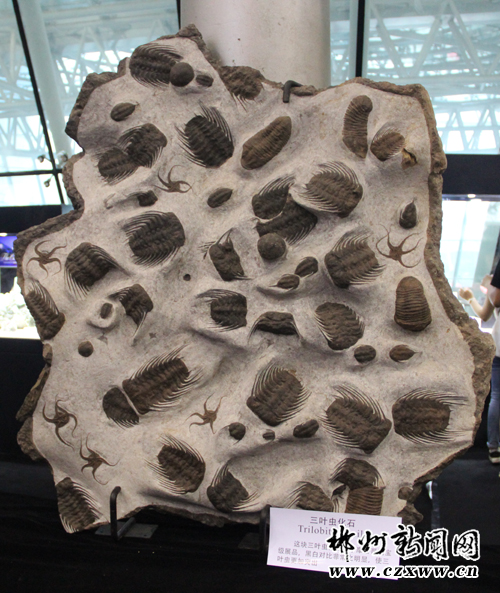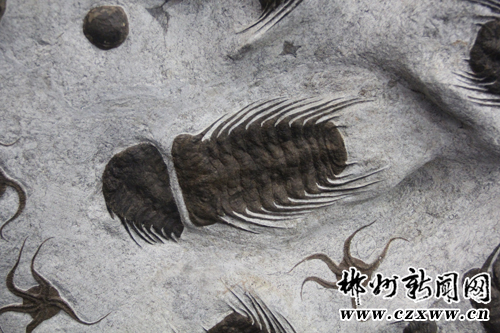National Treasure of Morocco-Trilobite Fossil Exhibits in the Mineral Show
“Ah, finally I see the trilobite fossil.” In the morning of May 22, 2015, when Ms. Liu saw the national treasure of Morocco- trilobite fossil in Chenzhou International Convention & Exhibition Center, she said excitedly to the reporters.

the national treasure of Morocco- trilobite fossil

As told by Ms. Liu, she is a fan of collection and once watched a film named “National treasure- reviving trilobite”, but she was unexpected to see the national treasure of trilobite fossil in person, so she was very excited for this trip.
It was learned that this Morocco’s national level trilobite fossil is belonged to Mr. Zheng Jianrong. Different from other fossil which are with black grounding, this fossil is with white grounding that can show the dark color trilobites clearly.
Relative links
Over 300 years ago of Chongzhen period of Ming Dynasty, Zhang Donghua found a kind of “monster” which was embedding in the stone. Because it looked like bats spread the wings, he named the stone as “bat stone”. Till the 1920s’, some paleontologists studied the “bat stone” and finalized it was the tail part of trilobite.
The earliest record for foreign researches on trilobite was 1698. Rude named the trilobite which was with three gibbas as “trinucleus”. Till 1771, Val named it as “trilobite” based on its morphological features that it can be divided into three parts vertically and horizontally- head, chest and tail from vertical direction and axis and two lateral lobes from horizontal direction.
Trilobite is the most representative ancient animal of Cambrian period of 560million years ago. Its peak time is 500million-430million years ago. It becomes totally instinct in Permian period of 240million years ago. From those data, we can tell that it is an animal with strong vitality for it lives for over 320million years in the world. Different species of trilobites are evolved in this long history, some of which are 70cms long and some are 2mms long.
Ten thousands species of trilobites have been discovered in the world. Due to the rapid development of trilobite, it is much suitable to be used for index fossil. Some rare trilobites fossils with soft body parts as foot, branchia and antennal were once discovered in British Columbia, New York, China, Germany and some other places.




